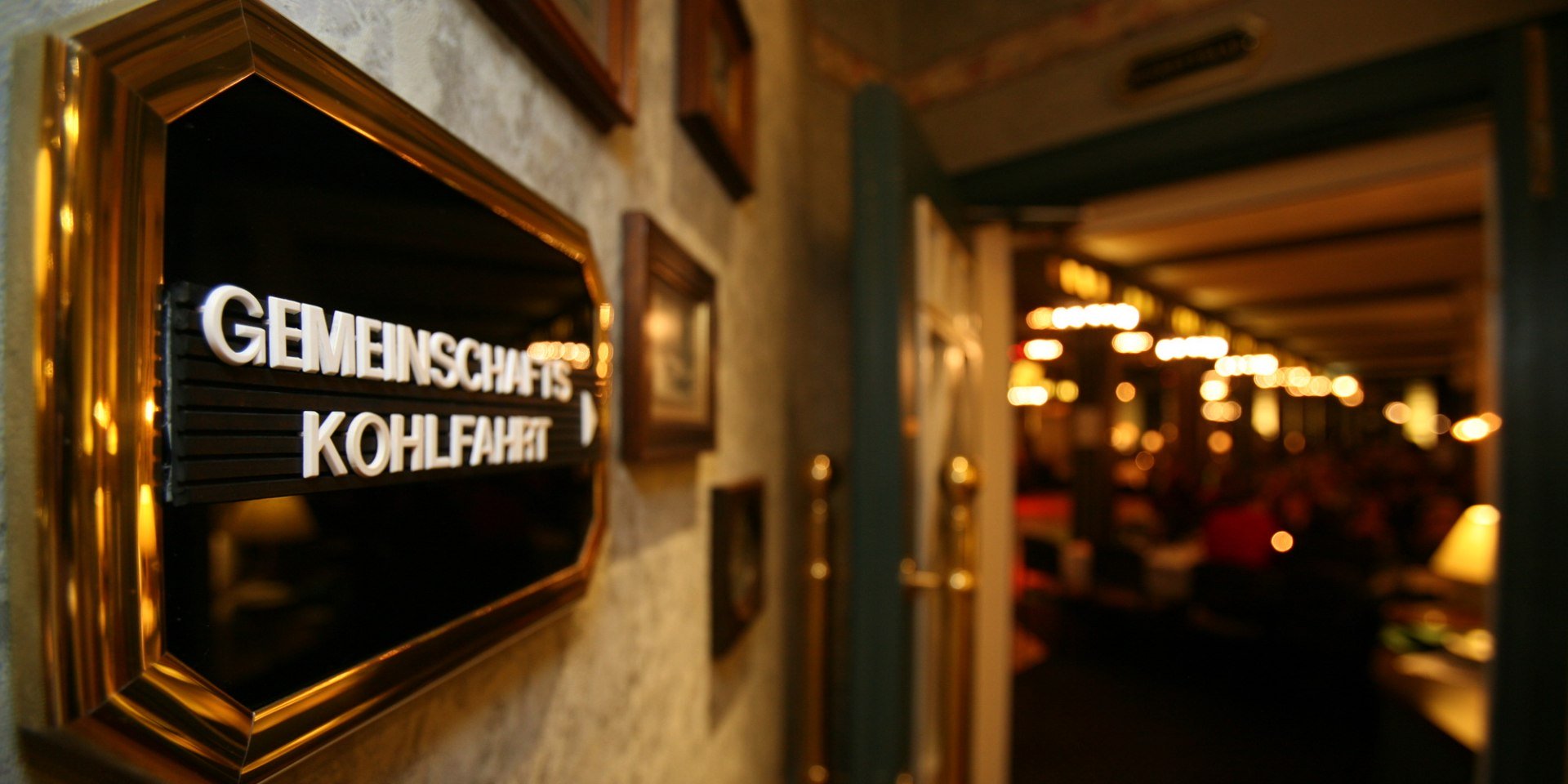Kale tours are traditionally organised in the kale regions of Niedersachsen (mainly around Bremen and Oldenburg). This involves a group getting together and going for a walk with a handcart. Games are played along the way before a hearty meal of kale is served in an inn. Afterwards, there is often music and dancing until the event ends around midnight.
The earliest reports of kale excursions (now known as kale tours) date back to the 19th century. In his memoirs titled ‘Reminiscences of an old Oldenburger’ published in 1874, the master saddler H.A. Spieske (born in 1785) looks back on his youth and the first kale excursions in Oldenburg:
‘And wealthy townspeople enjoyed nothing as much as a sleigh ride in winter. The magistrate that would then announce that each person had to clear the snow from the street in front of their house, and those who had horses and a Rhenish sleigh harnessed the horses. The horse would be decked out in a blanket of red velvet and seamed with bells or other jingling instruments, with a big plume on its head and flowers in its mane, and the sleigh lined with a big bearskin to keep the lady of the manor warm and the gentleman behind her on the coach box, dressed in a warm fur coat and a fur cap and a fox brush on his head, a whip in his hand. And with the first crack of the whip and sounding of the bells, the other sleighs would hastily join, and they would all race through the streets at full speed. They were hardly bothered by other carts, because at that time of the year, there would only be an occasional farmer taking a load of corn to the mill or a townsman would take a load of dung out to the fields. As long as frost prevailed, the fields were open for sleighing.
And our good Duke Peter Friedrich Ludwig also joined in the fun. Whenever it became known that His Highness was also willing to ride out, then everyone who had any means at all charged through the streets of Oldenburg, with His Highness leading the way. If the frost would keep for a longer period, the dignitaries would meet for an excursion through the countryside and give advance warning to a wealthy land owner (Bödeker in Mansholt, Ovie at Gristede, etc.) for a “long cabbage” on the next day, and then they would be assured of a festive welcome in the house decked out in country style.
Long wooden boards would be set up on trestles and crates, covered with a white tablecloth. The seats of honour would be made up of filled bags of corn, three on top of each other, while the good housewife would have filled the cabbage pot with ham, half a pig’s head and coarse pork-and-beef sausages and placed it on the fire, leaving it there, while they waited for the sound of the postilion’s horn. Such a train had an outrider, and once they heard him, the master of the house and his wife would present themselves with their servants in front of the door and bid them a hearty welcome!
Then the guests were led into the front rooms, where a jug of hot milk would await the ladies, while the gentlemen would be treated to a German corn schnapps, and the horses would be covered with blankets and led into the stable. On the large table, a bright, shiny pewter plate would await each guest, as well as a loaf of homemade bread, a plate full of butter and a whole cheese on each end of the table - intended more as decoration than as food. In the meantime, the housewife would bring in two or three large bowls filled with kale, so thick that it did not even steam any more, with a large piece of smoked beef, ham, sausage and a pig's head adorning the table.
And then they set to the food properly, not missing out on beer either, and much to the joy of the landlord, everyone agreed: “It is quite true: kale tastes much better out in the countryside than in town!” And after the meal, they drank coffee until it was time to harness the horses again. There would be no mention of paying, that would have insulted the landlord, who deemed the visit a great honour. But the guests would collect a small amount for the housewife to distribute to the servants. The merry crowd would continue on their boisterous ride back to town, and many of them would still reminisce about the kale excursion long after.’
Those kale excursions were initially reserved for the nobility and wealthy townspeople, who had ample leisure time and contacts in the countryside. Only after the mid-19th century were commoners gradually also able to undertake such tours. Trains transported the first kale tourists from the towns to the surrounding countryside, where the catering services focused on kale during the winter months.
The tradition-steeped Oldenburg Gymnastics Association, founded in 1859, deserves special mention in this regard, as they are held to have invented kale tours - at least in this area. In 2005, they organised the 134th kale tour in the history of the association.


